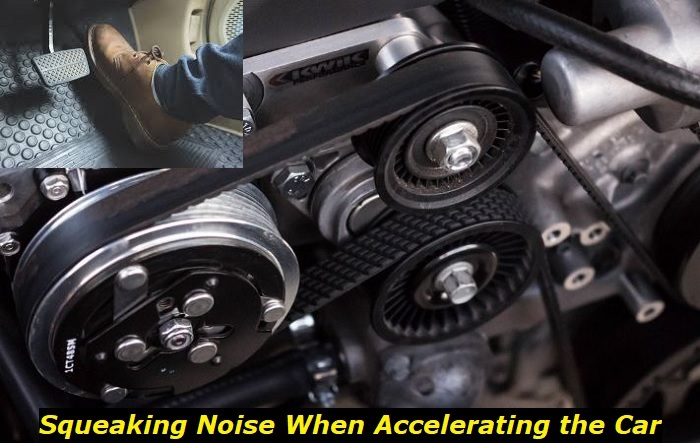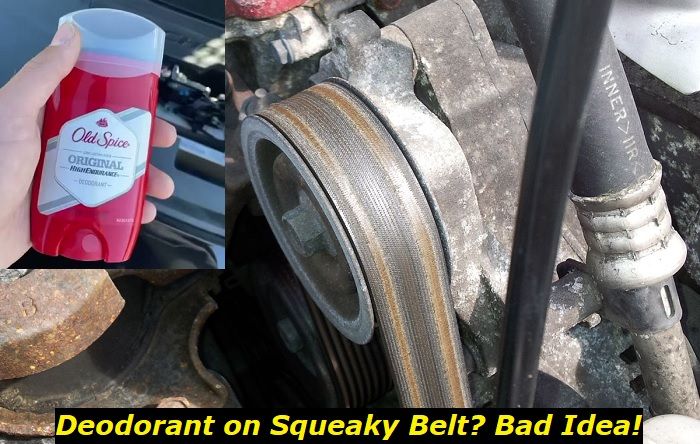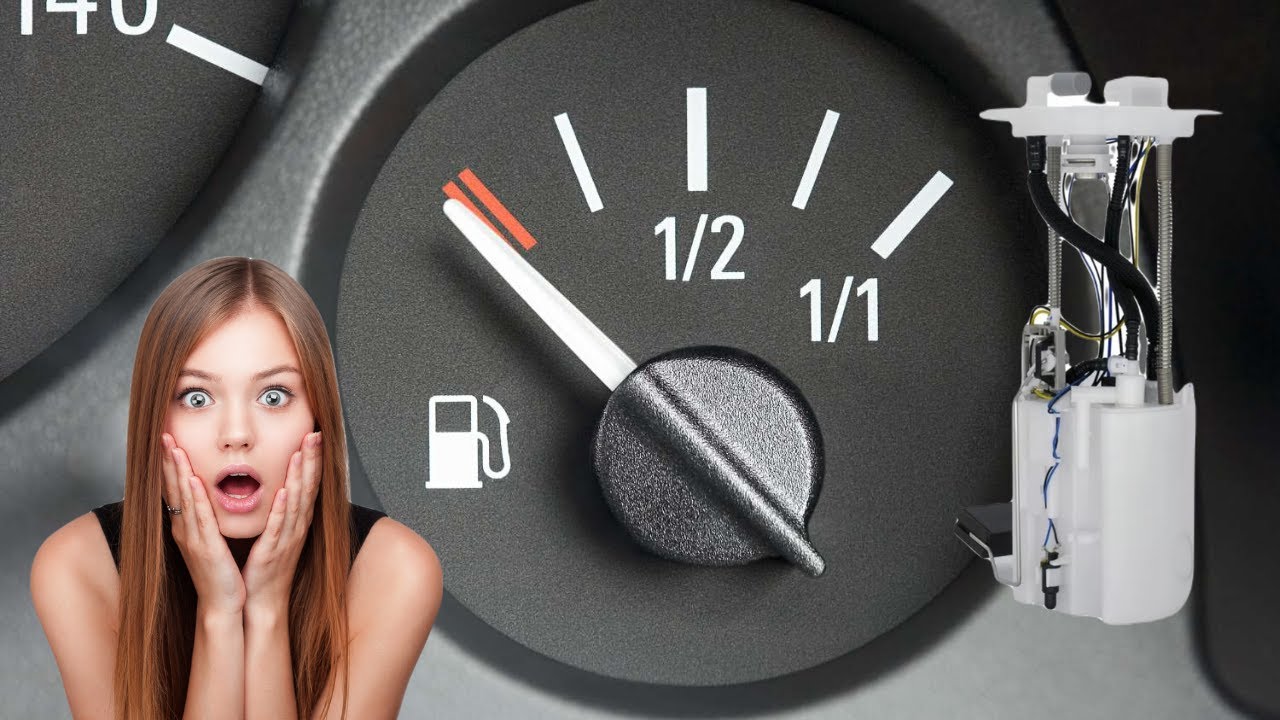Nowadays, you can't really imagine life without owning a car. It can make your life much easier. When you own one, you can go wherever you please, whenever you please without relying on taxis and public transport. However, it does have its drawbacks.
Cars are rarely flawless machines. The more you drive them, the more issues you'll run into. One of the most common issues is strained acceleration, as you discovered lately. Whenever you hit the gas pedal, you can hear a squealing noise coming from the engine. Should you be prepared for expensive repair costs or is this something you can handle on your own?

In this article, you'll learn the following about squeaking noises during acceleration:
- What the issue means
- What other symptoms you can expect
- What causes the issue
- How to fix it
- How long your serpentine belt should last
- How expensive the repairs will be
What does a squeaking noise when accelerating mean?
Hearing a squeaking noise whenever you accelerate can be quite scary. Fortunately, diagnosing it is usually simple. This problem usually results from a worn serpentine belt.
Also called a drive belt, this component delivers power from the engine to components such as the alternator, A/C, water pump, and power steering pump. These parts are fairly important, meaning you should inspect any damage to your serpentine belt immediately.
If you hear a squeaking noise when you accelerate, it means your serpentine belt is either slipping or damaged. This will affect your vehicle's drivability. Although it doesn't affect engine performance directly, it can affect the function of important parts such as the alternator. If it breaks down completely, you'll eventually be unable to drive your vehicle.
Luckily, replacing the belt is a simple and relatively cheap procedure. If you're feeling up to it, you might even accomplish it by yourself.
What symptoms other than squeaking noise when accelerating can you expect?
Squeaking noises when accelerating almost always point to a faulty serpentine belt. But sadly, this won't be the only symptom you'll have to deal with. The belt is a vital component. When damaged, it will affect your car's performance. Here are 4 additional symptoms you may experience:
1) Visual damage on your serpentine belt
If you're lucky, your serpentine belt is merely slipping. If so, all you have to do is readjust it. But if it's old, it may slip again. This usually happens when the belt stretches too far and doesn't cling to the pulley well. If so, you'll have to replace it completely.
Your serpentine belt may also be cracked, frayed, or split. If so, it won't be long before it snaps completely. When that happens, your alternator won't work anymore. As a result, your car won't start at all.
2) Loss of function
When you hear a squeaking noise when you accelerate, it usually means the belt is just slipping. However, even slight displacement can affect the function of other engine components.
The alternator generates an electrical current. However, it relies on the serpentine belt to turn mechanical force into a current. When the belt goes bad, your lights and other electronics might start acting up. The most common symptom is dim lights. Your battery will also drain even while you drive.
Your power steering and A/C will also come offline. Although you may survive without the A/C, the loss of power steering can be a serious issue.
3) Overheating engine
The serpentine belt also drives the water pump. This component is responsible for cooling the engine. If it doesn't receive enough power, your engine's temperature will keep rising. As a result, it will wear down prematurely. In some cases, it may also seize.
Engine damage is one of the most expensive repairs. Simply replacing your serpentine belt is a thousand times cheaper.
4) 'Check Engine' comes on
Most cars can detect issues with the serpentine belt. They often display the 'Check Engine' light to alert you to possible problems. However, the light may only come on when the belt snaps completely. If you just hear the squeaking noise whenever you accelerate, it likely means your belt is just slipping. If so, the system may not detect any issues. We advise you to check the belt regardless or the issue may worsen.
What if it isn't the serpentine belt? Another reason you might hear a squeaking noise when accelerating
If your serpentine belt seems to be in a good condition, make sure you check out the serpentine belt tensioners. As the name suggests, these components increase the belt's tension. This makes it cling to the pulley tight.
When faulty, the tensioners will hinder the belt's performance. When you accelerate, it won't be able to keep up with the change in speed, resulting in a loud, squeaking noise. You might also hear this noise whenever you start the engine.
How long should a serpentine belt last?
Unlike most car components, the serpentine belt wasn't built to last. Because it's made of rubber, it will wear down over time. Several factors can affect how long the belt will last before it inevitably breaks down. But as a rule of thumb, it should hold its own for 50,000 to 100,000 miles.
If you pass the 50,000 miles mark, you're much more likely to experience the symptoms above. To prevent it, make sure you check the belt whenever you near the number. We also recommend replacing the belt every 60,000 miles regardless of how it appears. Doing so will prevent the squeaking noise when accelerating altogether.
How to fix the squeaking noise problem
Fixing the squeaking noise issue is very simple. In most cases, you'll have to readjust the serpentine belt. You can find it on the side of your engine. But before you do so, allow the engine to cool down first. Then, attach the slipping belt. If you're unsure how to do that, you can consult the manufacturer's manual.
Reattaching a slipping belt might sometimes fix the squeaking noises when accelerating only temporarily. In this case, the belt is likely stretched out and doesn't fit hold tightly against the pulley. This happens naturally as you rack up the miles.
If it's too loose or even damaged, you'll have to replace it. The task is relatively simple, and you can handle it on your own. Just make sure you attach the new belt as detailed in the manual. Otherwise, the issue will persist.
If the squeaking noise happens because of faulty tensioners, you likely won't be able to fix the issue on your own. We recommend visiting the nearest auto shop to avoid making the issue even worse.
How much does it cost to fix the squeaking noise issue?
Financially speaking, strained acceleration isn't the worst problem your car could have. The repairs are relatively cheap, regardless of what caused the issue in the first place.
If it's a failing serpentine that causes the squeaking noise when accelerating, you may be able to replace it for as little as 50$. However, some models require serpentine belts that may cost up to $200. If you plan to leave it to a professional, be ready to pay anywhere from $140 to $250.
The tensioners are slightly more expensive, costing from $50 to $400. If you wish to visit an auto shop instead, the costs can range from $150 to $500.
Keep in mind that these prices are a very general assessment. Your vehicle model as well as the location of the auto shop will greatly influence the final cost.
Our final thoughts on squeaking noise when accelerating
Hearing odd noises coming from your car is never a good sign. If you hear a squeaking noise whenever you accelerate, you're likely dealing with a loose serpentine belt. Although you can technically drive your car in this condition, we don't recommend it.
The serpentine belt transmits power from the engine to components such as the A/C, alternator, power steering, and water pump. If it comes loose, these components won't work properly. And if it breaks completely, they won't work at all. While you can survive without A/C, the other parts are very important when it comes to drivability.
The most important one is the alternator. This component generates electric current and powers up your battery. Without a functioning belt, the alternator won't be able to keep up with your power demand. As a result, your battery will lose charge even while you are driving. Your electronic components such as windshield wipers and headlights will soon follow.
Your vehicle also needs the water pump, a crucial part of the cooling system. Without it, your engine will overheat. In the best-case scenario, this will just lower its lifespan. However, driving with an overheated engine can endanger your life.
Luckily, the issue is easy to fix. In some cases, you fix the squeaking noise when accelerating by simply reattaching the belt. But the surest way to fix it is by replacing it completely. This is a cheap and easy procedure and it shouldn't take more than 15 minutes.
About the authors
The CarAraC research team is composed of seasoned auto mechanics and automotive industry professionals, including individuals with advanced degrees and certifications in their field. Our team members boast prestigious credentials, reflecting their extensive knowledge and skills. These qualifications include: IMI: Institute of the Motor Industry, ASE-Certified Master Automobile Technicians; Coventry University, Graduate of MA in Automotive Journalism; Politecnico di Torino, Italy, MS Automotive Engineering; Ss. Cyril and Methodius University in Skopje, Mechanical University in Skopje; TOC Automotive College; DHA Suffa University, Department of Mechanical Engineering






Add comment